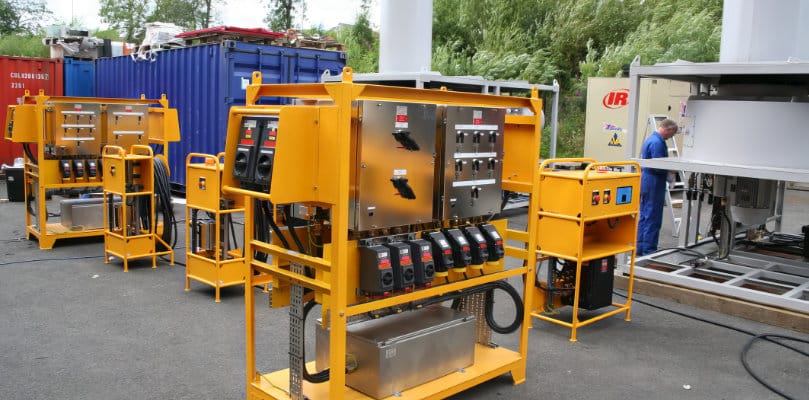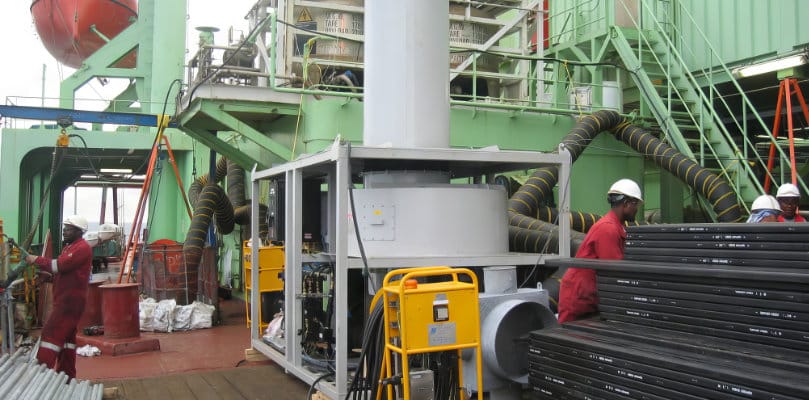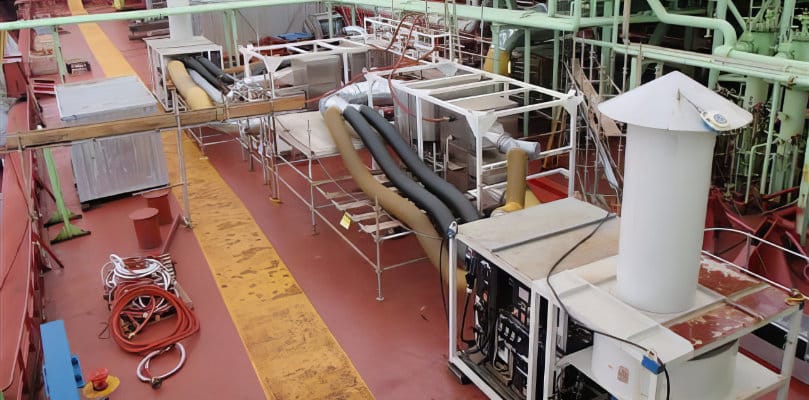Hess Equatorial Guinea, Sendje Ceiba
Dehumidification of Slops Tanks for Coating Renewal
Development of bespoke dehumidification system to allow on-station repair in zone 1 hazardous area.
The Challenge
As part of their on-going support of structural integrity management and repair on the Sendje Ceiba, MTL were tasked creating suitable environmental conditions in which to perform the coating renewal of a slops tank, including abrasive blasting and cleaning. To enable successful execution of coating renewal the relative humidity needs to be maintained at less than 60%. The ambient conditions within the slops tank were 80-100% relative humidity and 28 – 30°C.

A number of other constraints also had to be considered which made the task particularly challenging:
- The flow of fresh air into the tank had to be maintained within a confined space.
- The available electrical supply was limited.
- The equipment was to be located in a zone 1 hazardous area.
In addition to this the equipment needed to be simple so that maintenance could be carried out by onboard crew. Finally, the temperature inside the tank was also critical; for worker safety it could not exceed 35°C.
The Solution
- 40% reduction of relative humidity
- 5370m2 tank
- Zone 1 hazardous area
- Used existing ship steam supplies
- 5m³ of dehumidified air per second
With no off-the-shelf solution available, the challenge fell to MTL to plan and develop the solution. After a period of intensive research, MTL pinpointed Munters, a Swedish based producer of humidity and climate control systems, as best placed to aid development of a suitable dehumidification system. MTL engineers visited the Munters workshop and were able to explain the constraints on board the FPSO. This direct contact enabled efficient development of a prototype dehumidification system and MTL could confirm at an early stage that it would fulfil all the requirements.
“Identify expertise and co-ordinate design development”
The resulting system was a unique, simplified high-capacity dehumidifier, which required no electrical power. The drums were powered by 2 small air motors and regeneration heat was generated from the ship’s existing steam supply. The dehumidified air was then cooled to 32°C, using a stream of air from the VPS (Ventilation and Power Skid), without allowing the flows of air to mix. With two dehumidification trains operational in the tank, a total of 5m³ of dehumidified air could be pumped into the tank every second.

The Outcome
What really makes this system such a successful development is the combination of how effective it is and how well it satisfies the safety demands of working in a zone 1 hazardous area.
“Hostile environmental conditions controlled to allow quality repairs“
All of the equipment used in the design is non-sparking and no electrical power is required. If it were to use electrical power, new switchgear and power supplies would have to be installed to cope with the load, and the heaters and associated controls would need to be explosion-proof.

During development, the close collaboration between MTL and Munters ensured that the design took account of the constraints on board the FPSO, and made full use of the available resources. The resulting dehumidification system was not only very safe but extremely efficient. It achieved tank conditions of 50 – 60% rH and 32°C – capable of holding blast for several days. This enabled maximum efficiency on the job without compromising the quality of the repair.